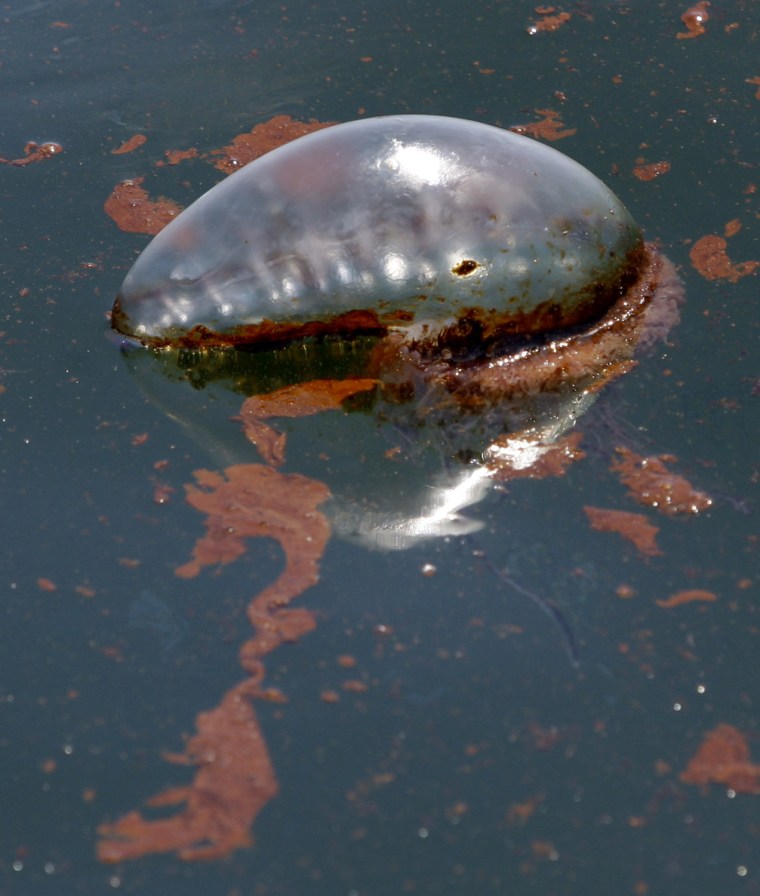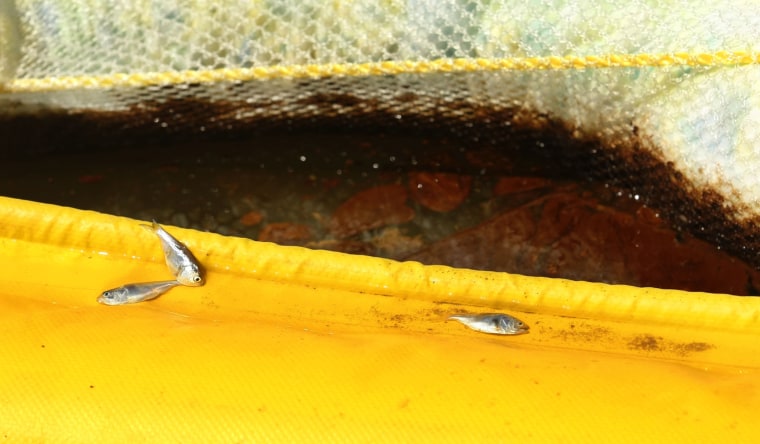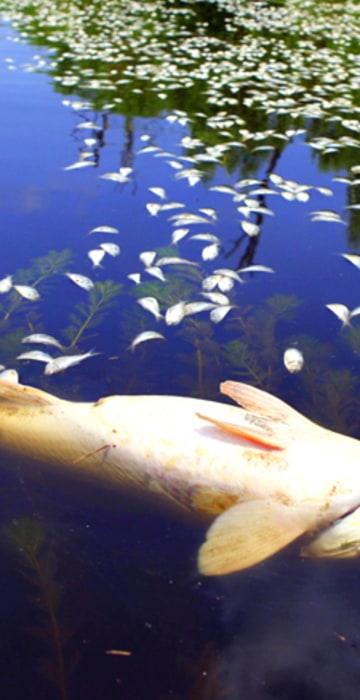
U.S. news
Grim inventory of wildlife claimed by Gulf spill
The toll of fish, birds and mammals in the Gulf of Mexico is rising.
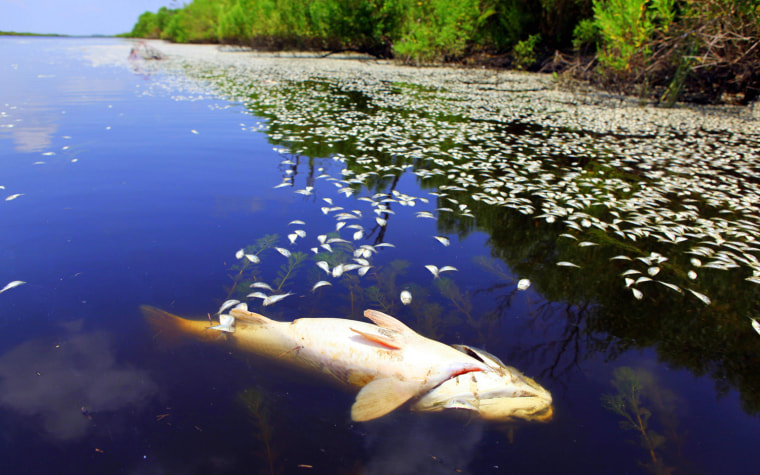
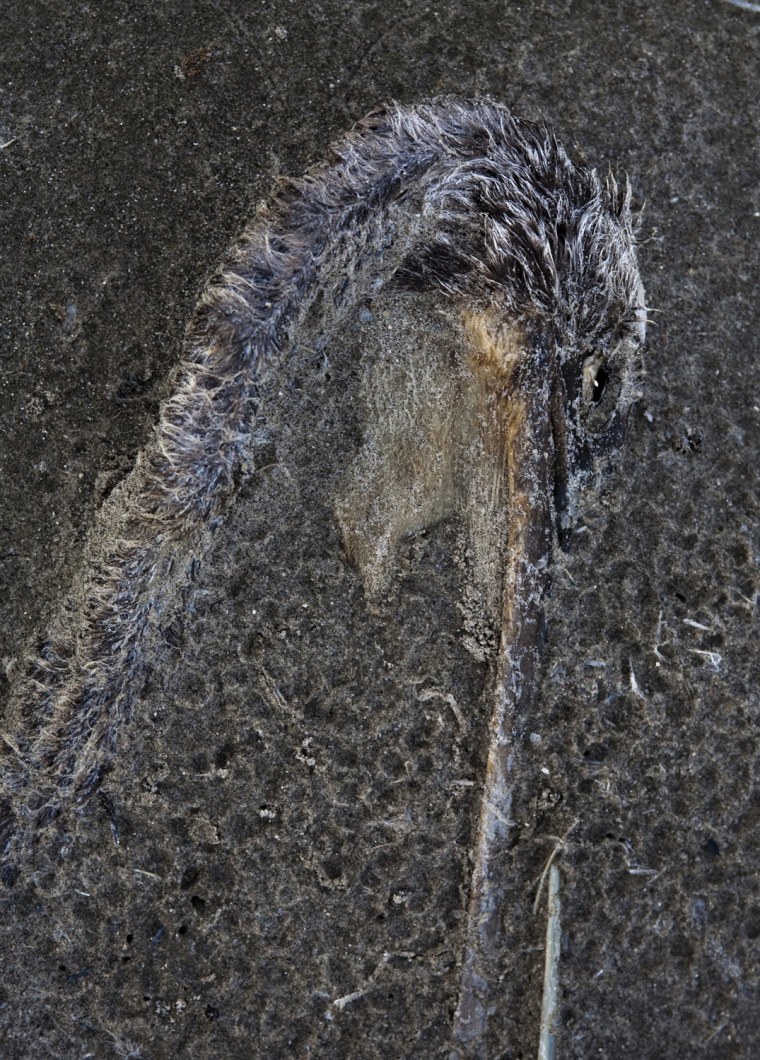
The remains of a dead pelican are seen on Raccoon Island, the largest pelican rookery in Louisiana. Rebuilt after Hurricane Katrina, it was home to more than 60,000 pelicans, but since the oil spill mature pelicans are scarce. Instead, there are thousands of dead birds and emaciated and abandoned juvenile and baby birds.
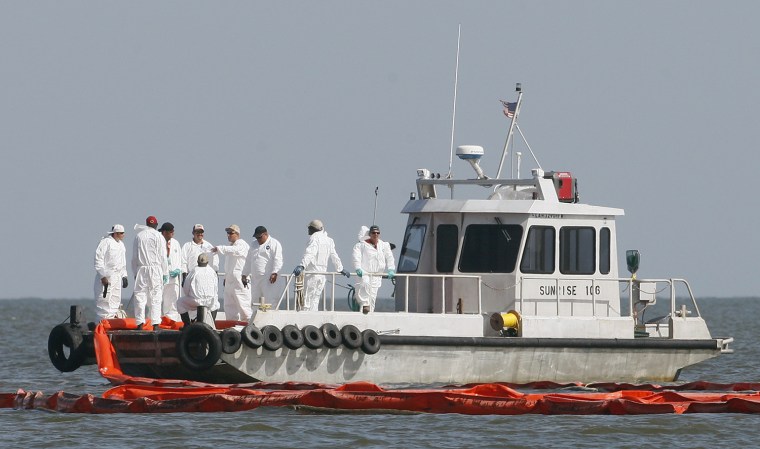
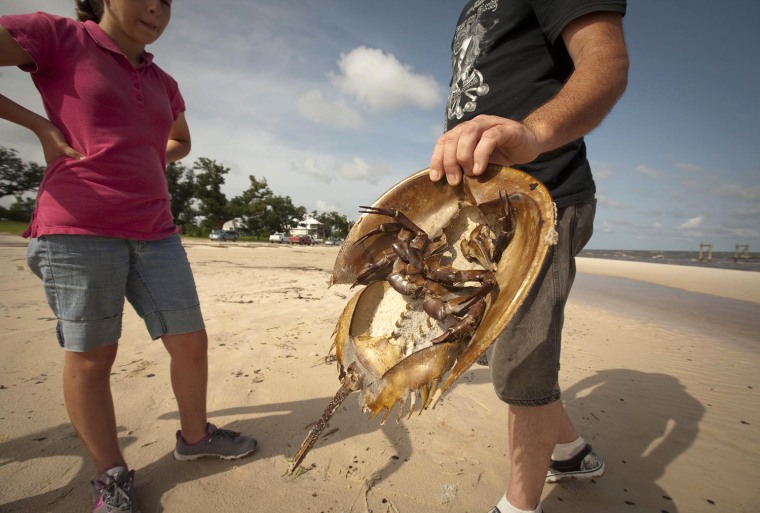
The LaFontaine family of Waveland, Miss., find a horseshoe crab dead amid globs of oil on the beach of its town July 7. Numerous dead horseshoe crabs were found along the beach as their populations are thought to be declining world wide due to harvesting, gathering by humans and habitat destruction, like that caused by the Deepwater Horizon oil spill.
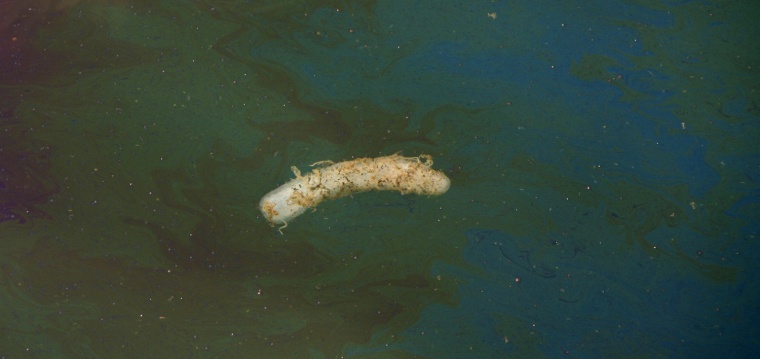
Scientists are seeing early signs that the massive Gulf spill is altering the food web, by killing or tainting creatures that form the foundation of marine life -- such as this dead pyrosome, spotted June 17 by a University of California Santa Barbara team in an oil slick near the site of the Deepwater Horizon rig -- and spurring the growth of others more suited to a fouled environment.

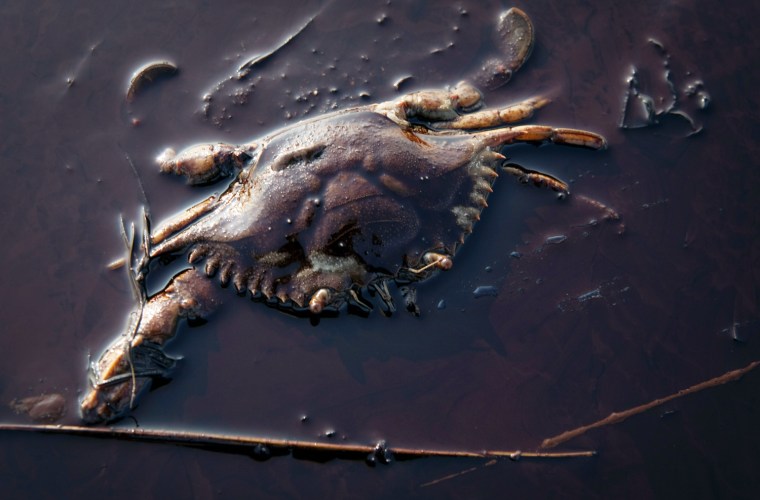
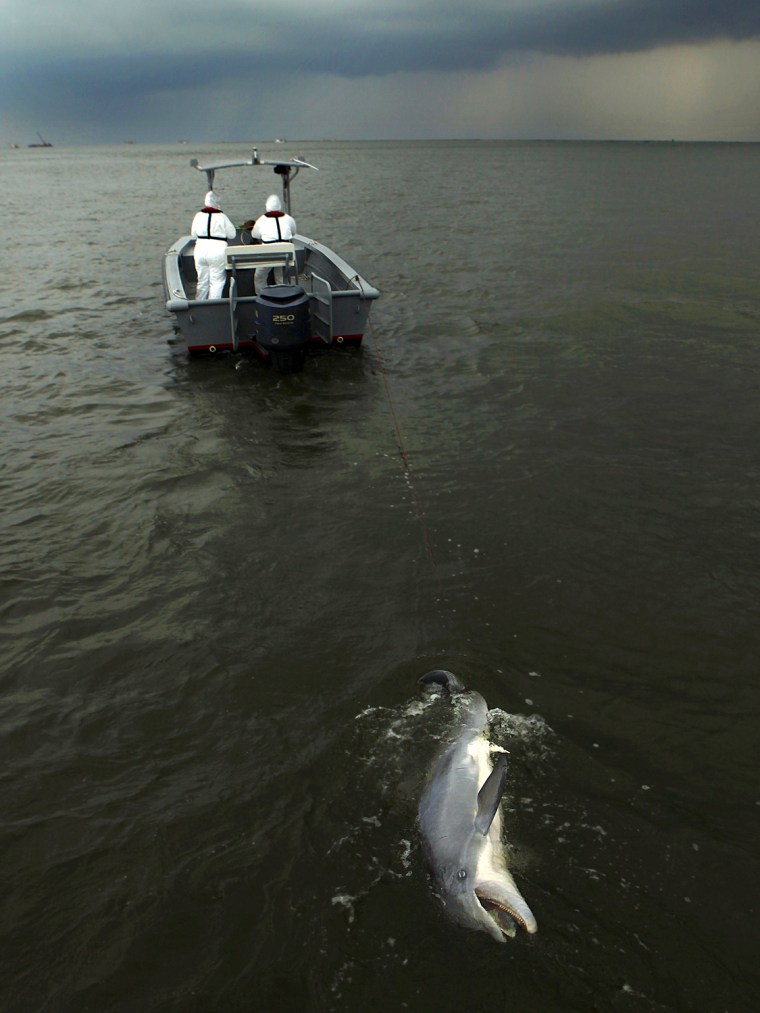
Biologists from the Louisiana Department of Wildlife and Fisheries recover a dead dolphin off of Grand Isle. The scientists towed the dolphin to shore as a thunderstorm was approaching. Further testing will determine if its death was due to exposure to toxins from the oil spill.
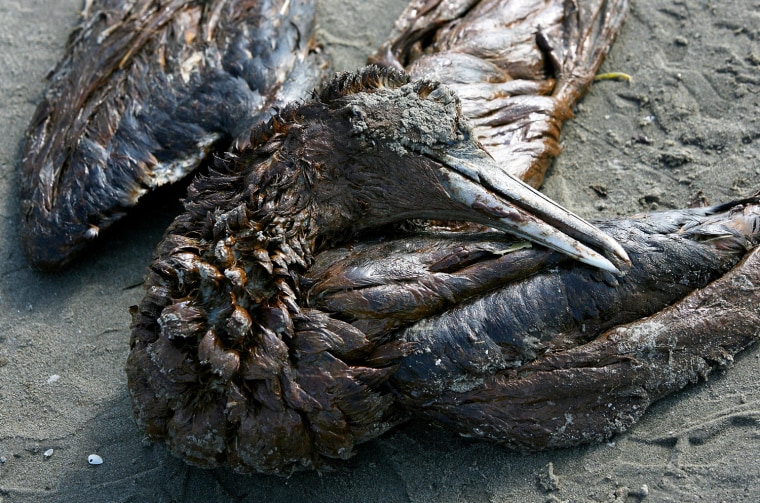
A dead Northern Gannet covered in oil lies along Grand Isle Beach in Grand Isle, La. on May 21. A month after the well blowout and rig explosion that unleashed the catastrophic spill, sheets of rust-colored heavy oil started to clog fragile marshlands on the fringes of the Mississippi Delta, damaging fishing grounds and wildlife.
